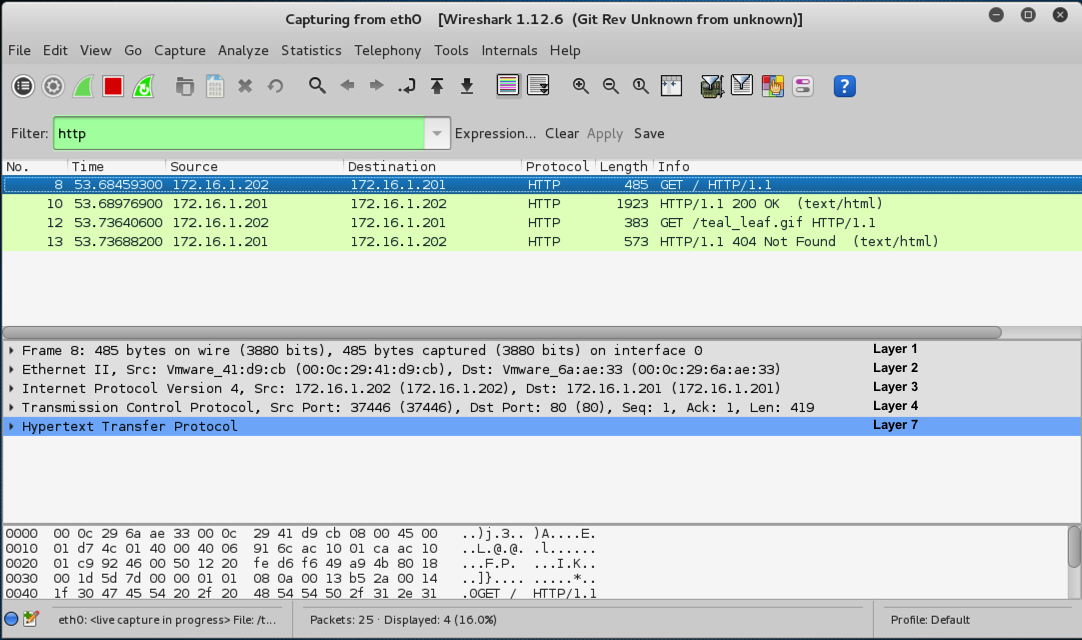


As Figure A shows, wireshark output consists of two panes: the top pane shows the packets, while the bottom pane shows details of packets highlighted in the top pane. Clicking on the icon next it (circled in red) stops the capture. Starting a capture is simply a matter of clicking on the icon shown circled in green on Figure A. Wireshark can be started from the command line, but it usually needs to be run as root or as sudo. This week’s post provides a brief introduction to wireshark and shows two basic filters that can be used to extract two different classes of traffic. Wireshark is a protocol analyser available for download. Scott Reeves shares the wireshark filters that helps you isolate TCP and UDP traffic.

You'll have to monitor the veth-a interface.Two simple filters for wireshark to analyze TCP and UDP traffic (You can also use the MASQUERADE rule if you prefer)įinally, you can run the process you want to analyze in the new namespace, and wireshark too: ip netns exec test thebinarytotest Ifconfig veth-b up 192.168.163.254 netmask 255.255.255.0Ĭonfigure the routing in the test namespace: ip netns exec test route add default gw 192.168.163.254 dev veth-aĪctivate ip_forward and establish a NAT rule to forward the traffic coming in from the namespace you created (you have to adjust the network interface and SNAT ip address): echo 1 > /proc/sys/net/ipv4/ip_forward The setup might seem a bit complex, but once you understand it and become familiar with it, it will ease your work so much.Ĭreate a test network namespace: ip netns add testĬreate a pair of virtual network interfaces (veth-a and veth-b): ip link add veth-a type veth peer name veth-bĬhange the active namespace of the veth-a interface: ip link set veth-a netns testĬonfigure the IP addresses of the virtual interfaces: ip netns exec test ifconfig veth-a up 192.168.163.1 netmask 255.255.255.0 If your kernel allows it, capturing the network traffic of a single process is very easily done by running the said process in an isolated network namespace and using wireshark (or other standard networking tools) in the said namespace as well. I know this thread is a bit old but I think this might help some of you:


 0 kommentar(er)
0 kommentar(er)
